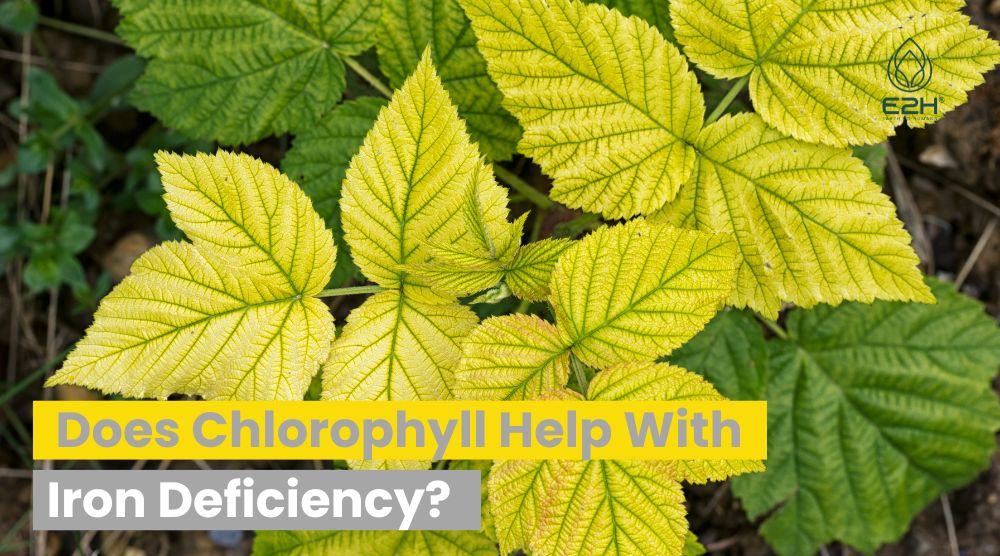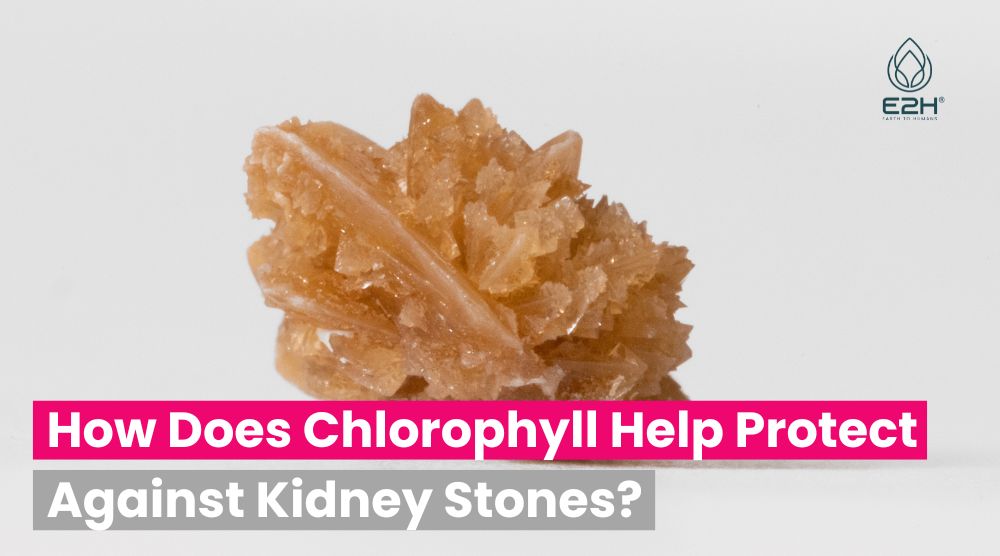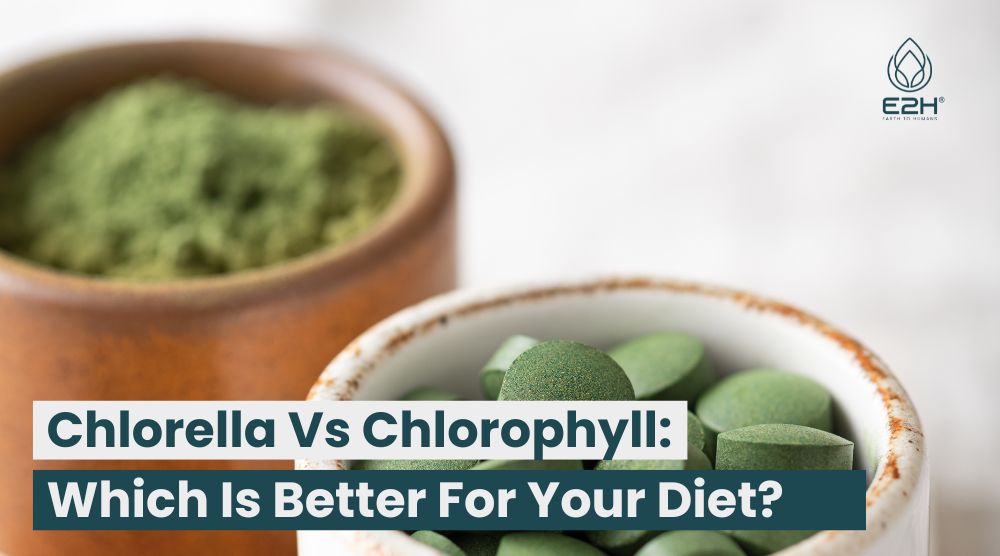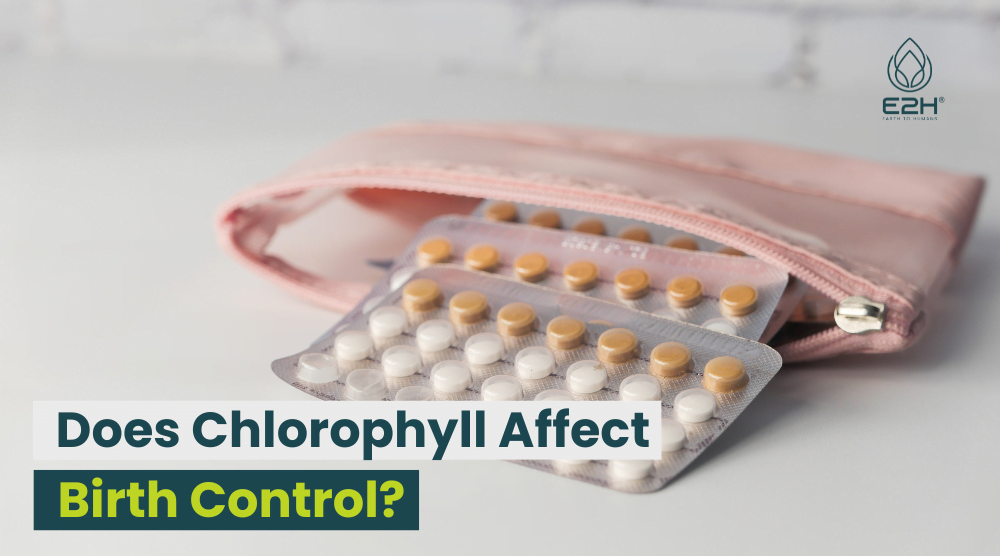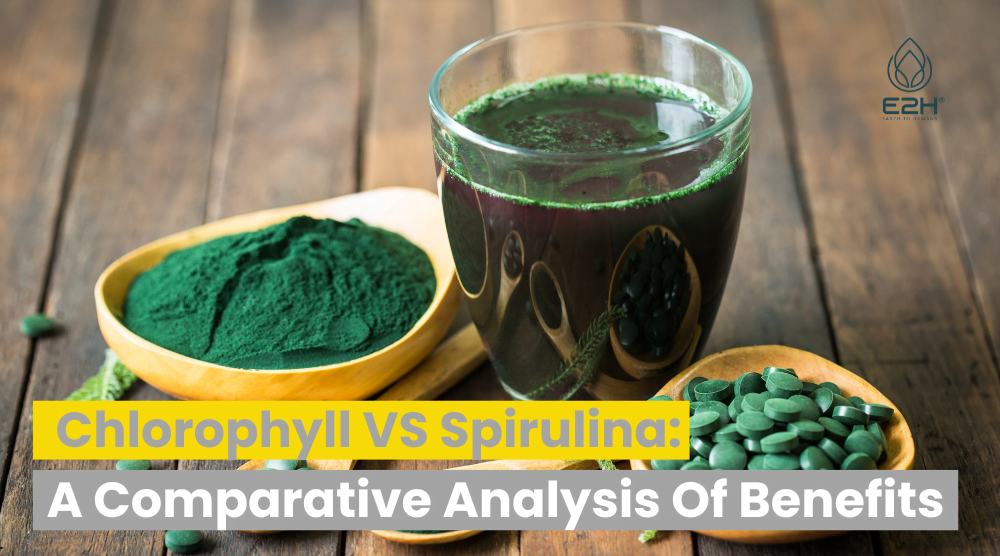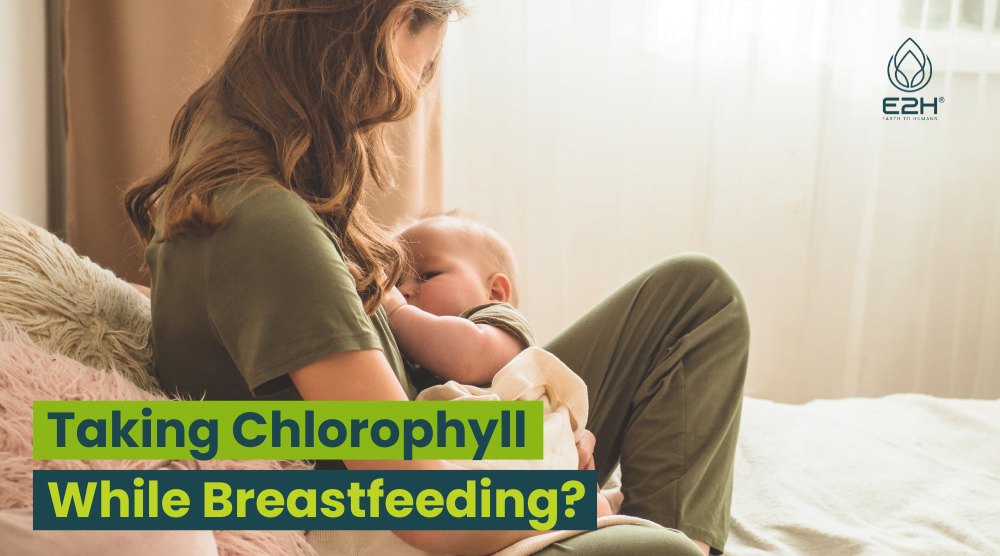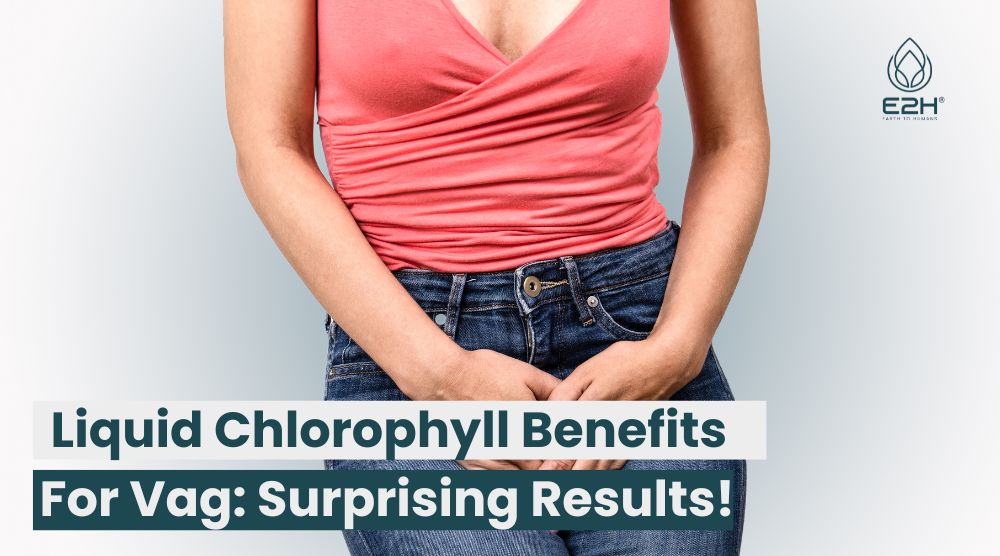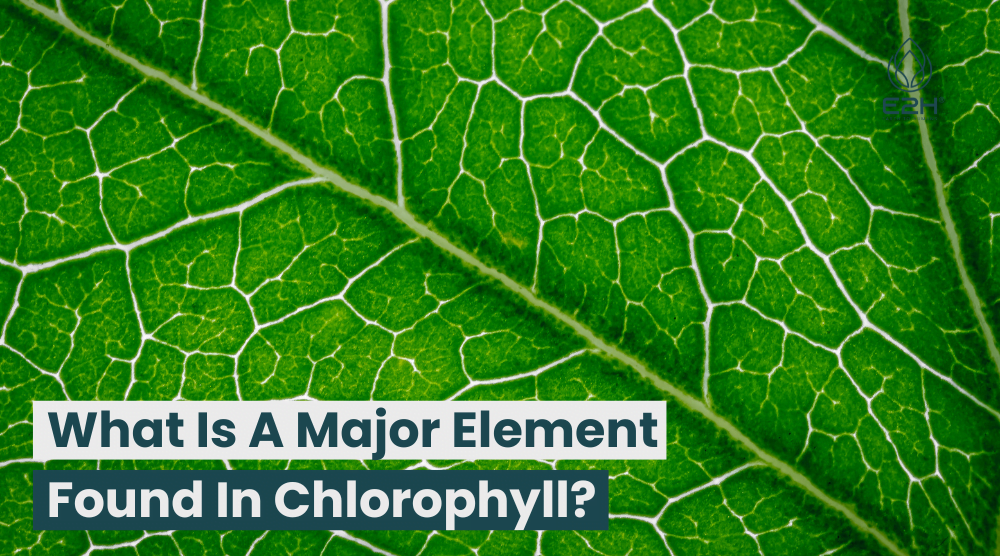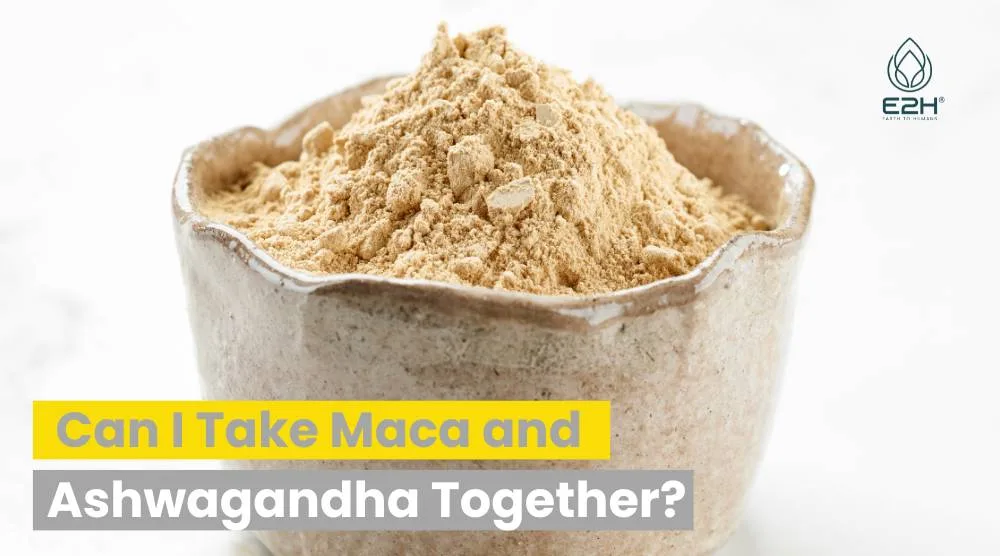There is evidence to suggest that chlorophyll may help with cancer treatment and iron deficiency anemia. A clinical trial in 2019 found that chlorophyll supplements led to an increase in total red blood cell count and improved health in children with iron deficiency anemia. Therefore, it is reasonable to believe that chlorophyll can be beneficial in treating iron deficiency.
What is chlorophyll, and how does it work?
Chlorophyll is a pigment found in green plants and algae that is essential for photosynthesis, the process by which plants produce energy from sunlight. It is responsible for absorbing light in the blue and red parts of the spectrum and reflecting green light, giving green plants to their characteristic color.
In humans, chlorophyll has been shown to have antioxidant, anti-inflammatory, and wound-healing properties. It is also believed to aid in detoxification and improve digestion. Chlorophyll is often consumed as a dietary supplement, and is available in liquid, in tablet form, and topical forms.
What is iron deficiency, and what are the symptoms?
Iron deficiency is a common nutritional deficiency that occurs when the body does not have enough iron to produce hemoglobin, a protein found in red blood cells that carries oxygen throughout the body. Symptoms of both iron deficient or hemoglobin deficiency disorders include fatigue, weakness, shortness of breath, dizziness, headaches, pale skin, and cold hands and feet. In more severe cases, iron deficiency can lead to iron deficiency anemia, a condition in which the body does not have enough red blood cells to transport oxygen, resulting in symptoms such as rapid heartbeat, chest pain, and shortness of breath.
Does chlorophyll help with iron deficiency?
There is evidence to suggest that chlorophyll consumption may be helpful in treating iron deficiency anemia. Chlorophyll is a green pigment found in plants that plays a critical role in photosynthesis. It has been found to have antioxidant, anti-inflammatory, and wound-healing properties in humans.
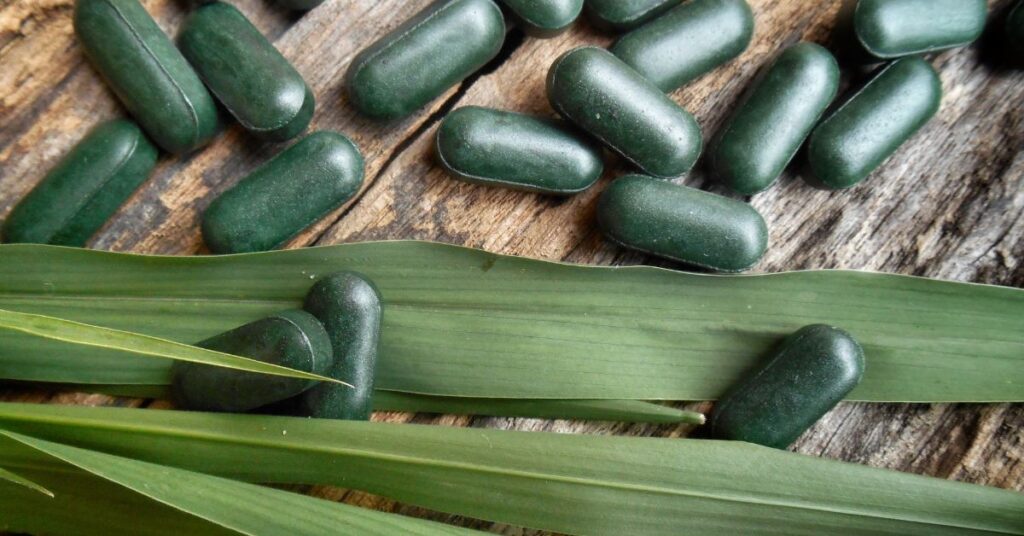
A clinical trial conducted in 2019 aimed to investigate the effects of chlorophyll supplements on children with iron deficiency anemia. The children in control group were given either low, moderate, or high-dose dietary supplements containing either calcium chlorophyllin or sodium chlorophyllin derived from chlorophyll. After 1-3 weeks of treatment, all groups exhibited an increase in total red blood cell count and improvements in overall health.
It is believed that the iron contained in chlorophyll may help to improve iron absorption in the body, leading to an increase in red blood cell count. Chlorophyll may also help to detoxify the body, reduce inflammation, and improve digestion, all of which may contribute to its potential health benefits such as effective treatment for iron deficiency anemia.
While the scientific evidence regarding the efficacy of the chlorophyll supplement for iron deficiency anemia is still limited, the results of the 2019 clinical trial are promising. However, it is important to note that chlorophyll supplements should not be used as a substitute for traditional medical treatment for iron deficiency anemia. Anyone experiencing symptoms of iron deficiency should consult with a healthcare professional for proper diagnosis and treatment.
How can I increase my iron intake naturally?
There are several ways to increase iron intake naturally:
- Eat iron-rich foods: Include iron-rich foods in your diet, such as red meat, poultry, seafood, beans, lentils, spinach, and fortified cereals.
- Consume Vitamin C-rich foods: Vitamin C helps the body absorb iron better. So, include vitamin C-rich foods, such as oranges, strawberries, kiwi, and broccoli, in your diet.
- Cook with cast-iron cookware: Cooking with cast-iron cookware can increase the iron content of your food.
- Avoid consuming iron inhibitors: Certain foods can inhibit the absorption of iron in the body, such as tea, coffee, dairy products, and foods high in fiber.
- Consider taking iron supplements: If you have an iron deficiency or are at risk of developing one, consider taking iron supplements after consulting with a healthcare provider.
What are the 3 main benefits of chlorophyll?
The three main health benefits out of chlorophyll are:
- Promoting healthy digestion: Chlorophyll can help stimulate the production of enzymes that aid in digestion and detoxification, as well as promote healthy gut bacteria.
- Supporting healthy blood: Chlorophyll has been shown to improve the quality and quantity of red blood cell, increase oxygenation in the blood, and aid in the removal of toxins.
- Supporting skin health: Chlorophyll has been found to have anti-inflammatory properties, which can help soothe skin irritation, as well as promote wound healing and reduce the signs of aging. Topical application of chlorophyll has also been found to help reduce acne and other skin conditions.
Is chlorophyll a form of iron?
No, natural chlorophyll is not a form of iron. Chlorophyll is a very green color of pigment found in plants and algae that is involved in the process of photosynthesis, which converts sunlight into energy. While the natural chlorophyll itself does contain magnesium at its center, it does not contain any significant amounts of iron. Iron is a mineral that is essential for the production of hemoglobin in red blood cell and is involved in the transportation of oxygen throughout the body. While chlorophyll may help with certain symptoms associated with iron deficiency anemia, it is not a substitute for iron and should not be relied upon as the sole treatment for this condition.

What does chlorophyll do for females?
Chlorophyll can benefit females in several ways. It can help increase the production of red blood cell and improve the oxygenation of the body, which can be particularly beneficial for women who suffer from iron-deficiency anemia. Chlorophyll also has anti-inflammatory and antioxidant properties that can help reduce menstrual cramps and other symptoms associated with the menstrual cycle in healthy women. Additionally, chlorophyll may have a positive impact on overall skin health, which can be particularly important for women. However, it is important to note that more research is needed in these areas to fully understand the potential potential health benefits of of chlorophyll for females.
Can I take chlorophyll with iron pills?
Yes, it is generally safe to take more chlorophyll in supplements along with iron pills. In fact, some studies suggest that taking more chlorophyll in supplements may enhance the absorption of iron in the body. However, it is always recommended to consult with your healthcare provider before starting any new supplement regimen, especially if you are already taking medication or have any underlying health conditions. Your healthcare provider can help you determine the appropriate dosage and ensure that there are no potential interactions or risks associated with combining these supplements.
Does the study propose the use of chlorophyll for iron deficiency anemia?
The study discussed in the paragraph suggests that benefits of chlorophyll may be beneficial for treating anemia caused by iron deficiencies. The clinical trial conducted in 2019 aimed to determine the effects of supplements containing calcium chlorophyllin or sodium chlorophyllin derived from chlorophyll on children with iron deficiency anemia.
The results showed that the supplements led to an increase in total red cell count and overall health. However, it’s important to note that the literature on this topic is limited, and further research is needed to establish the efficacy of most chlorophyll supplements for treating iron deficiency anemia in larger and more diverse populations.
How does chlorophyll aid in the synthesis of red blood cells?
Chlorophyll aids in the synthesis of red blood cell by providing the body with a rich source of magnesium, which is essential for the formation of hemoglobin in the blood. Hemoglobin is the protein in red blood cells that carries oxygen from the lungs to the body’s tissues.
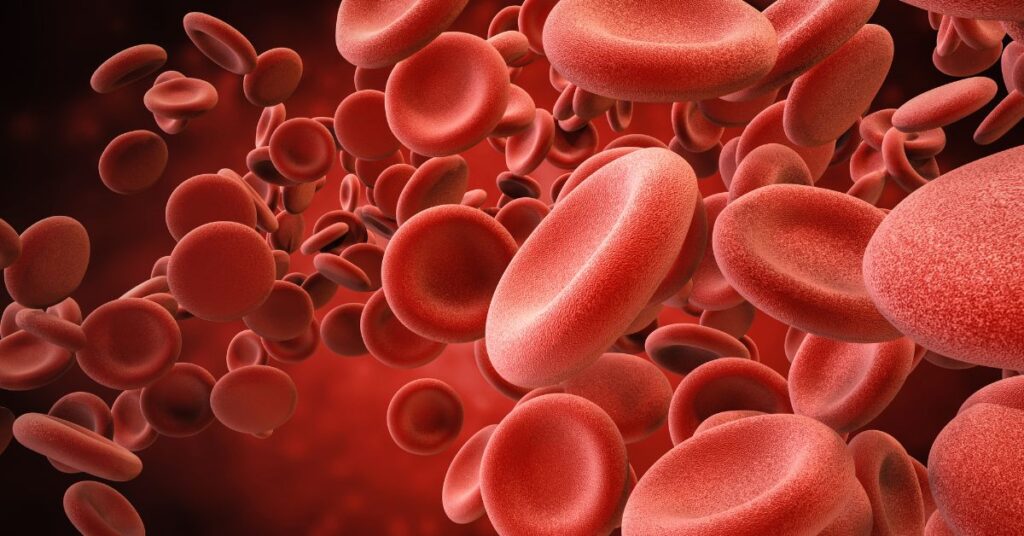
Chlorophyll also helps to increase the oxygen supply to the body’s tissues by purifying the blood and promoting better circulation. By supporting the formation of new red blood cell and increasing oxygenation, chlorophyll can help to alleviate symptoms of anemia and improve overall health and vitality.
Can topically applied sodium copper chlorophyllin benefit facial skin health?
Yes, recent research suggests that topically applied sodium copper chlorophyllin can benefit facial skin among other possible health benefits. Sodium copper chlorophyllin has several beneficial effects when applied topically, such as reducing inflammation, improving wound healing, and providing antioxidant protection.
Chlorophyll, which occurs naturally in green and herbal extracts, is often used in skincare products due to its antioxidant and anti-inflammatory properties. Chlorophyll dietary supplements are also available in liquid or tablet forms, but their effectiveness in improving skin health is still under investigation. Therefore, for individuals seeking to improve their facial skin health, using topical sodium copper chlorophyllin may be a beneficial option to consider.
Is there a standard dosage for chlorophyll supplements?
There is no standard dosage for taking chlorophyll supplements alone, and the recommended dose can vary depending on the product and the individual’s needs. It’s important to follow the dosage instructions on the product packaging or as recommended by a healthcare provider. It’s also crucial to be aware of any potential adverse reactions and to stop taking the supplement immediately if any occur. While chlorophyll supplements are generally safe, it’s always best to consult with a healthcare provider before starting any new supplement regimen to ensure it is safe and appropriate for an individual’s specific health needs.
What are the potential health benefits of chlorophyll supplement?
Research has suggested that chlorophyll supplements may possess antioxidant properties and may provide certain health benefits, such as reducing inflammation. Chlorophyll has also been found to aid in wound healing and slow cancer growth and red blood cell production. Some evidence suggests that chlorophyll may also help to reduce the risk of colon cancer and improve gut health. However, the research into the potential benefits of chlorophyll supplements is still limited and ongoing. It is important to consult with a healthcare professional before taking any supplements, including chlorophyll supplements, to ensure they are safe and effective for your specific health needs.
How can liquid chlorophyll help with treating anemia?
Liquid chlorophyll is believed to increase red blood cells in the body and aid in blood cell regeneration by helping the cells carry more oxygen. When another source of supplemental iron is present, adding liquid chlorophyll to the diet produces far better results in treating anemia because it naturally boosts iron stores.
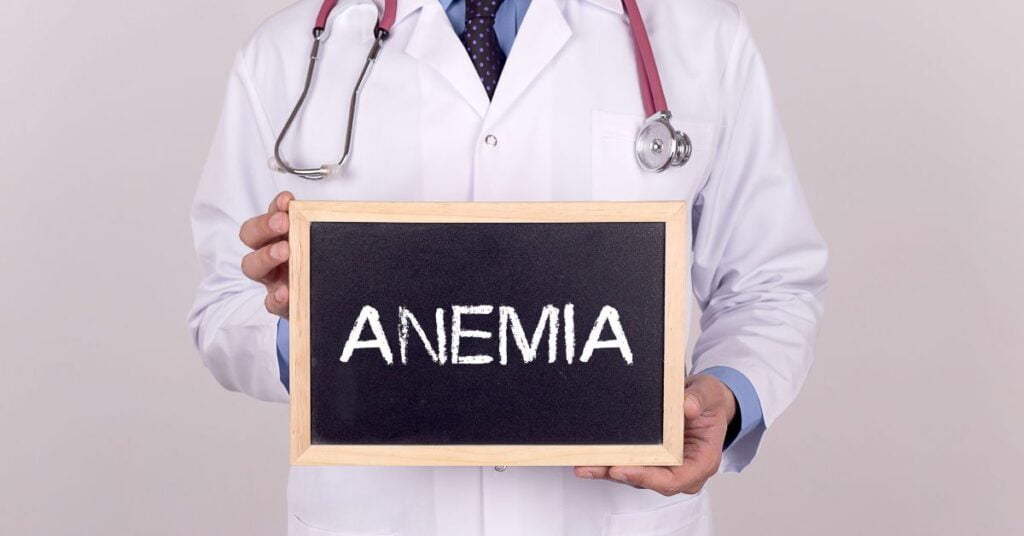
This is due to the fact that chlorophyll contains a similar molecular structure to hemoglobin, the protein responsible for carrying oxygen in red blood cells. By increasing the amount of chlorophyll in the body, it is believed to improve the body’s ability to produce healthy red blood cells and treat anemia. However, further research is needed to fully understand the potential benefits of liquid chlorophyll in human blood and in treating anemia.
How to Reverse Iron Deficiency Anemia – 3 Tips
FAQs
Is chlorophyll safe to consume?
Yes, chlorophyll is generally considered safe to consume. However, high doses of chlorophyll supplements can cause diarrhea, cramps, and other digestive issues.
Can chlorophyll supplements be used to treat iron deficiency?
Chlorophyll supplements should not be used to treat iron deficiency without medical supervision. Iron supplements are the recommended treatment for iron deficiency anemia.
Are there any side effects of iron supplements?
Yes, some people may experience side effects such as constipation, nausea, and stomach cramps when taking iron supplements. It is important to follow your doctor’s instructions when taking iron supplements.
Is there any potential treatment with Cholorophyll?
Research topical chlorophyll is ongoing, but there is potential for topical chlorophyll also to be used as a treatment. Like Cancer treatment Chlorophyll has shown potential for healing cancer in some animal tests.
What are the blood building properties chlorophyll?
Chlorophyll has blood-building properties that can aid in the production of red blood cells and improve oxygen transportation in the body, thereby helping to treat anemia and support overall health.
Conclusion
Iron deficiency is a common health issue that can lead to anemia, fatigue, and other health problems. While there is some evidence to suggest that chlorophyll may help with iron absorption, the research is still inconclusive. It is important to focus on consuming a balanced diet that includes iron-rich foods and to follow your doctor’s recommendations for treating iron deficiency anemia.
Chlorophyll supplements should not be used as a substitute health supplement for a healthy diet and should only be taken under medical supervision. By making dietary changes and seeking medical treatment when necessary, you can increase your iron intake and prevent the negative health effects associated with iron deficiency.
